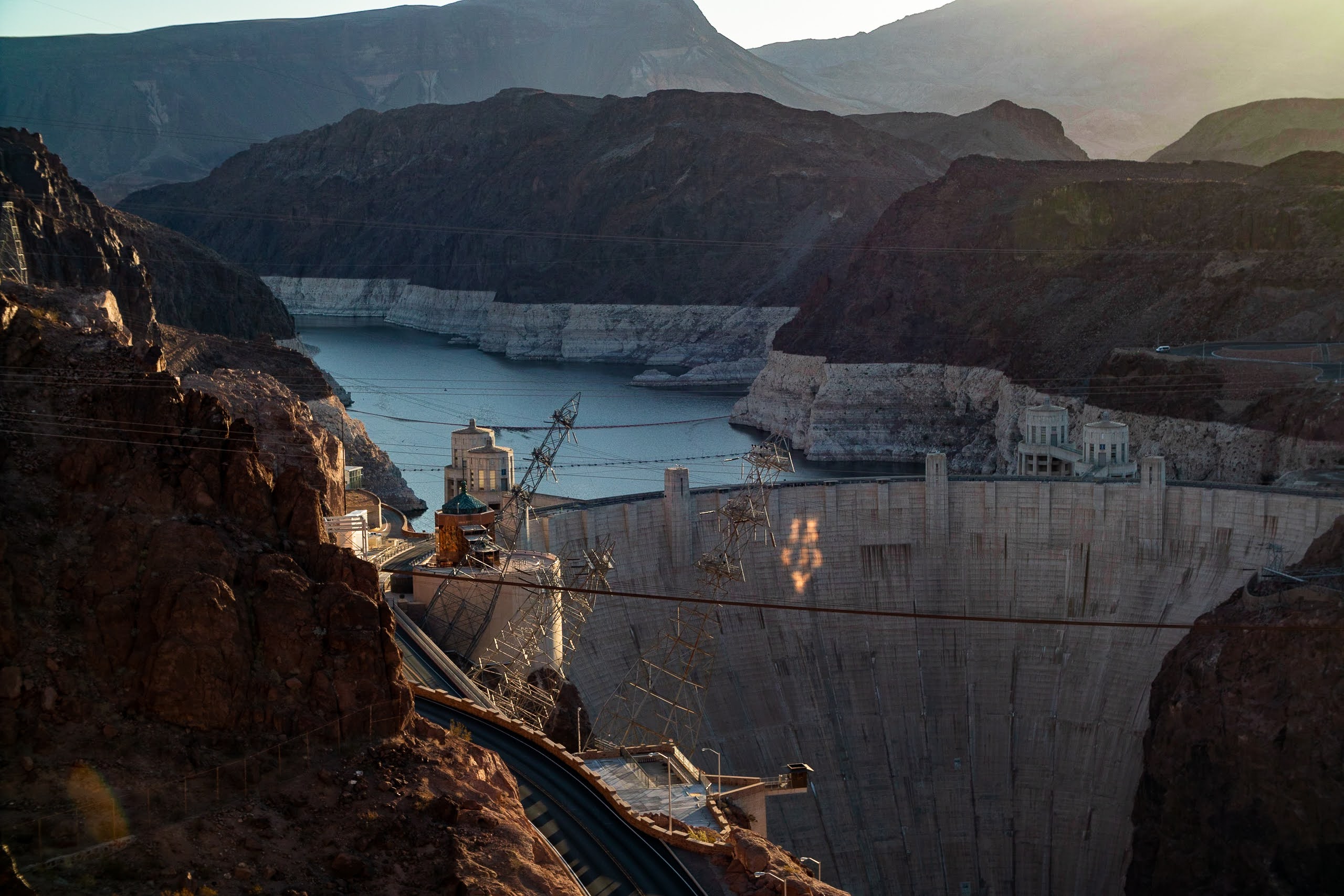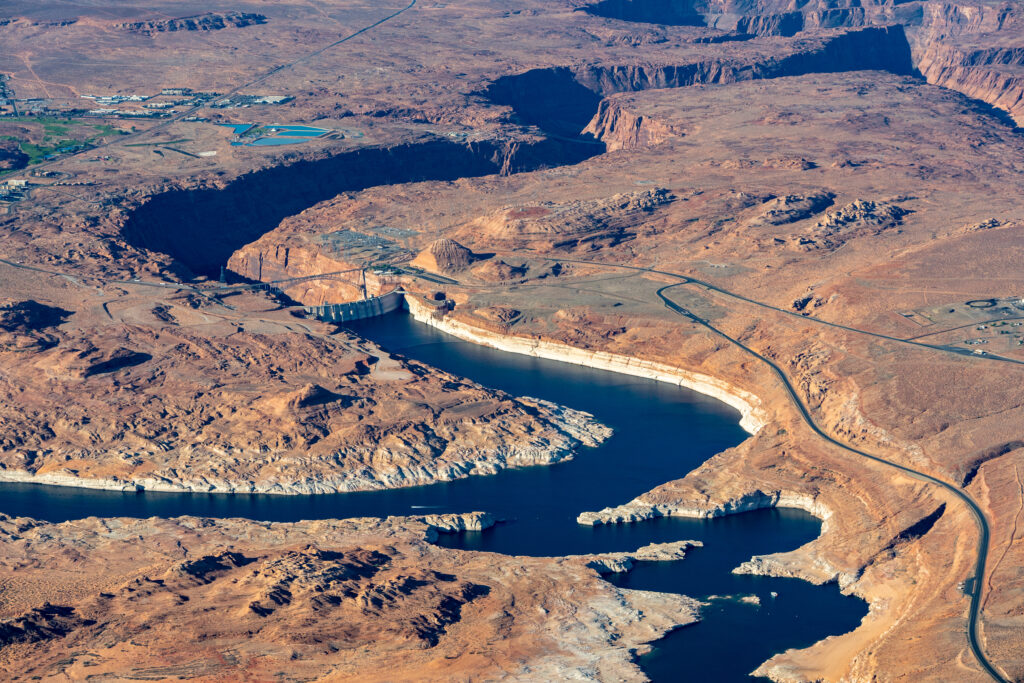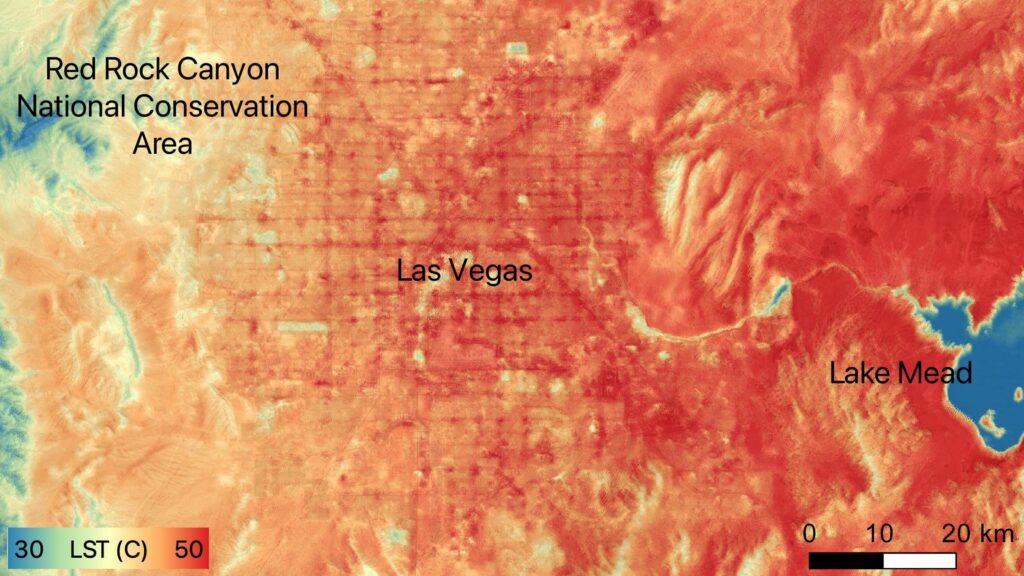‘A subtraction problem:’ A shrinking Colorado River faces sharp, sudden cuts

Good morning, and welcome to the Indy Environment newsletter.
As always, we want to hear from readers. Let us know what you’re seeing on the ground and how policies are affecting you. Email me with any tips or suggestions at [email protected].
To get this newsletter in your inbox, subscribe here.
Within the next two months, Colorado River negotiators face a daunting task: Develop ways to reduce use by an enormous amount, or the federal government will make the cuts on its own.
Earlier this month, the federal government told the seven states in the Colorado River Basin that reservoir levels are so low they face a pressing crisis that warrants large-scale conservation, even as water users negotiate long-term operating guidelines for a shrinking river in an arid future.
The ongoing drought and climatic conditions facing much of the West are “unprecedented,” said Camille Calimlim Touton, who leads the U.S. Bureau of Reclamation, the agency responsible for managing water infrastructure across the region. Touton told federal lawmakers on June 14 that Colorado River users must reduce diversions by a substantial amount: 2 to 4 million acre-feet.
One acre-foot, alone, is a massive amount of water. It is enough water to fill one acre, about the size of a football field, to a depth of one foot. It is 325,851 gallons of water and weighs about 2.7 million pounds. Multiply that by two to four million, and that is how much water the states are being asked to conserve. For perspective, Nevada has the legal right to consume 300,000 acre-feet, about 1.8 percent of all the legal entitlements in the Colorado River system. Together, Arizona, Nevada and California used about 7 million acre-feet from the Colorado River last year.
The cutbacks are necessary, Touton explained, to stabilize Lake Powell and Lake Mead, the two largest reservoirs on the Colorado River. Over the past year, both reservoirs have hit record-low levels and have continued to drop. If they drop further, the West faces extreme risks in the production of hydroelectric power — which is shepherded across the region — and the deliveries of water downstream for millions of residents and farmers in the Southwest.
The size of the cutbacks is not necessarily a surprise. Nearly all of the state water officials and experts I’ve spoken to have crunched the numbers and come to a similar conclusion. But the speed at which the cuts must be made presents a challenging task for negotiators.
The past decade on the river has been marked by efforts to conserve and cut, to address both a drought, worsened by climate change, and structural overuse that can no longer be ignored with increasingly arid conditions across the Colorado River Basin. The seven states that rely on the Colorado River, often working with the federal government, Mexico and Native American tribes, have entered into several agreements that gradually trigger cutbacks as Lake Mead falls. Those agreements took years to negotiate, and do not reduce use by what is currently necessary.
Now, Colorado River water users have two months to make harder and deeper reductions.
Chuck Cullom, who leads the Upper Colorado River Commission, which represents Colorado, New Mexico, Utah and Wyoming, said it is “a subtraction problem because of the time frame.”
“We don't have a decade to build elegant new treatment for recycling or desalination,” he said. “The tools we have left in this time frame are painful subtraction. And the challenge is how do you distribute the pain in a way that is fair, equitable and will need to have consensus support."
So where will all this water come from?
The water is likely to come from a combination of places, and the cuts will be felt by all sectors. In an interview, John Entsminger, the general manager of the Southern Nevada Water Authority, said that “every sector has to share the pain,” including urban, agricultural and industrial users.
But Entsminger is a realist, and he has publicly stated that it is mathematically impossible for the cuts to fall on the cities alone. The cities combined do not consume enough of the water. The agricultural sector uses nearly 80 percent of the water that flows through the Colorado River.
“You can evacuate Denver, Salt Lake City, Albuquerque, Las Vegas, Phoenix, and Los Angeles and still not have counted up enough water to get to what the [U.S. Bureau of Reclamation] is saying needs to be done,” Entsminger said. “So the agricultural sector has to be a part of the solution, or these reservoirs are simply going to continue to go down.”
Agricultural interests downstream of Lake Mead often have priority “senior” rights, allowing them to continue using water before cities with “junior” rights. At the same time, agricultural producers have an existential interest in ensuring Lake Mead does not crash.
If the reservoir falls further, it would jeopardize deliveries to all users, including farmers. J.B. Hamby, who sits on the Imperial Irrigation District’s elected board, recognizes “that’s not a workable solution for anybody.”
The Imperial Irrigation District, located in Southern California, controls 3.1 million acre-feet of Colorado River water, and as The Los Angeles Times’ Sammy Roth pointed out last week, it is difficult to see how the needed cuts could be made without the district on board.
Hamby said the district is open to negotiating. He mentioned an expansion of its efficiency program to incentivize conservation and “temporary, emergency fallowing” that would eventually be phased out (Hamby describes fallowing as the F-word).
"The idea is to grow the same amount of crop, just with less water," he said.
But Hamby stresses that the district would want to keep its priority rights, and there must be “equitable severity all around” — in other words, cities and states with “junior rights” must take painful cuts too.
There is a lot on the table. Imperial could be looking for greater ability to bank its unused water in Lake Mead. Then there is a need to fund conservation programs and mitigate the unintended consequences of conservation for the district. When water is conserved, less water runs off and flows into the Salton Sea, where an environmental crisis is unfolding and local communities in California’s Imperial Valley are exposed to hazardous dust coming from the lake’s shorelines.
Still, cutting significantly might be difficult to do. Already this year, the district is expected to go over its Colorado River allocation by about 75,000 acre-feet, due to market demands and a dry start to the year. But the district made progress this week in approving a new plan, known as an Equitable Distribution Plan, that will help it stay within its allotted water budget.
There is still ample room for cities to reduce their water use, as well, with a focus on protecting water supplies for essential drinking water, while reducing unnecessarily water-guzzling outdoor irrigation, which can significantly increase water demand. Hamby and others said that all urban planners in the basin should be wary about basing new growth on a water supply that is shrinking. If cities want to grow, they say, the water should come from reducing existing use or augmentation projects in the long term.

If all of this sounds complicated and multi-layered, that’s because it is exactly that. The negotiations revolve around details like these ones and a series of laws, treaties and deals (some up for interpretation) that have governed the river for the last century. The outcome must balance a number of factors at once, from the politics of local irrigation districts to state-level politics and the legal obligations the federal government has made to deliver water and power across the Southwest.
California holds rights that are given “senior” priority to the Central Arizona Project, a 336-mile canal that can deliver 1.4 million acre-feet of water to Arizona cities, Native American tribes and farms. Arizona has taken the largest volume of cuts under past plans, including the Drought Contingency Plan approved in 2019. Tom Buschatzke, who directs Arizona’s Department of Water Resources, said other states should contribute to the solution and reductions in use.
“We're looking for an outcome in which the benefits of the river to all the water users and the risk to that water supply does not fall, certainly, solely on the state of Arizona, and perhaps in a different proportion than the way it has fallen [in past shortage agreements],” Buschatzke said.
That thinking conforms with what the federal government has called for and the type of action it has hinted it intends to take. Touton called for a basin-wide approach that includes actions from all seven states. The signal is important because it could motivate all seven states to work together.
Almost everyone interviewed said the best outcome would be a negotiated solution, rather than see the federal government use its authority throughout the basin. Such a move could risk a protracted lawsuit that deepens the crisis by delaying action.
“Ultimately, do you want to sit at a table and negotiate your own future?” Entsminger said. “Or do you want to throw that into the courts, into the jurisdiction of the federal government, and have them determine what your future is going to look like? For me, it’s a matter of self-control.”
With its small slice of the Colorado River, Entsminger stressed that his role is to fight for recognition that Nevada has already driven down its Colorado River water use by 26 percent over the last two decades. He said Nevada has historically played a “facilitation” role in the negotiations, and the water authority intends to continue playing that role. But, he added, “if things turn adversarial, we’re ultimately going to have to take the steps necessary to protect our community.”
What type of action the federal government might take is “uncharted territory,” said Sarah Porter, who directs the Kyl Center for Public Policy at Arizona State University. She noted that "for the seven states to come to consensus in [such a] short amount of time is extremely challenging.”
Whether they come out of negotiations or are implemented by the federal government, the cuts are coming — and they are likely to have an unprecedented effect. Several water experts said the actions are part of a larger discussion about how to manage a smaller river in the long term and how to rethink a system of management that has often sidelined environmental groups and Native American tribes, which hold about a fifth of the river’s rights.
“If we are going to take this big drastic cut, let's take the opportunity to rethink our values,” said John Berggren, a water policy analyst with Western Resource Advocates, a conservation group.
He said it is important that the public is fully engaged in the process and there is a degree of transparency to the negotiations, which often occur among a small group.
Nearly 40 million people in the Southwest rely on the Colorado River for drinking water, agriculture and recreation. Different types of water users in the Colorado River Basin have different relationships to the river. Engaging all communities in these discussions is critical.
But oftentimes, the technocratic tone of water negotiations can feel distant from the everyday ways that many residents interact with water, said Faith Kearns, a scientist with the California Institute for Water Resources and the author of “Getting to the Heart of Science Communication.”
“People’s everyday use of water is actually way more intimate,” she said. “There is this huge disconnect between talking about dam levels and the water you use to brush your teeth.”
Kearns said it is important that leaders are realistic about the pain associated with the cuts and communicate what everyone can do to reduce water use. Kearns, who grew up in Arizona, said that on the individual level, most people understand that there is a problem, that the problem has existed for a long time, and they want to be part of the solution.
"If you sense a disaster looming, you don't necessarily want to be coddled into thinking that it's not the case,” she said. “Having a sense that we’re all going to do something about it is a relief.”

Here’s what else I’m watching this week:
The Truckee Meadows Water Authority gets a new general manager. John Zimmerman, who currently serves as the water purveyor’s deputy general manager, will lead the agency, which is responsible for delivering water to the Reno-Sparks area, This is Reno reports.
How heat is unevenly distributed in Las Vegas: NASA imagery shows how extreme heat was distributed across the Las Vegas Valley during a heat wave June 10. The map shows the urban heat island effect, which describes the way that infrastructure absorbs sunlight. “Dark surfaces like asphalt pavement absorb up to 95% of the sun’s radiation, making them hotter than nearby lighter surfaces and green spaces. Near Lake Mead, dark-colored volcanic rocks also heated up to levels comparable to the 122-degree pavement,” the Review-Journal’s Colton Poore writes.
Excellent reporting by KUNR’s Kaleb Roedel on the Pyramid Lake Paiute Tribe’s efforts to support the recovery of the cui-ui and Lahontan cutthroat trout — and a recent $8.3 million federal grant that will help with a project to build a critical fish passage.
“The river was almost dead for so many years. And right now, this is an historic moment. We are connecting the river.” The Los Angeles Times’ Ian James and Luis Sinco document efforts to reconnect the Colorado River with its delta, which has been significantly altered by years of overuse. The project shows how even a small pulse of water can make a difference.
Last week, the Nevada Supreme Court released a decision the court majority said could “significantly affect water management in Nevada.” I wrote more about what it means.
The Bureau of Land Management is considering raising fees at Red Rock.
“We feel unstable in terms of our expectation of our relationship with our place now.” My colleague Carly Sauvageau wrote about how longer and more extreme summer fires — and the smoke that arises from them — are affecting quality of life and recreation in Northern Nevada.
In a historic move, federal land managers announced a deal to co-manage Bears Ears National Monument with five Native American tribes, the Salt Lake Tribune’s Brian Maffly writes.

